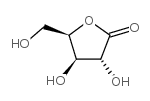| 结构式 | 名称/CAS号 | 全部文献 |
|---|---|---|
 |
D-xylono-1,4-lactone
CAS:15384-37-9 |
| 结构式 | 名称/CAS号 | 全部文献 |
|---|---|---|
 |
D-xylono-1,4-lactone
CAS:15384-37-9 |